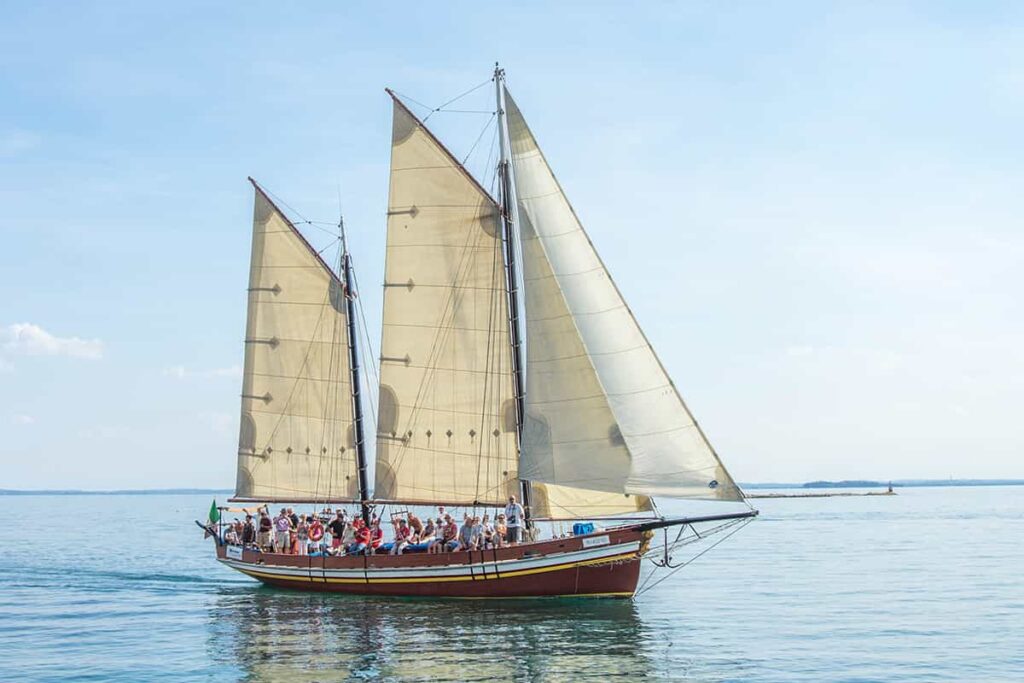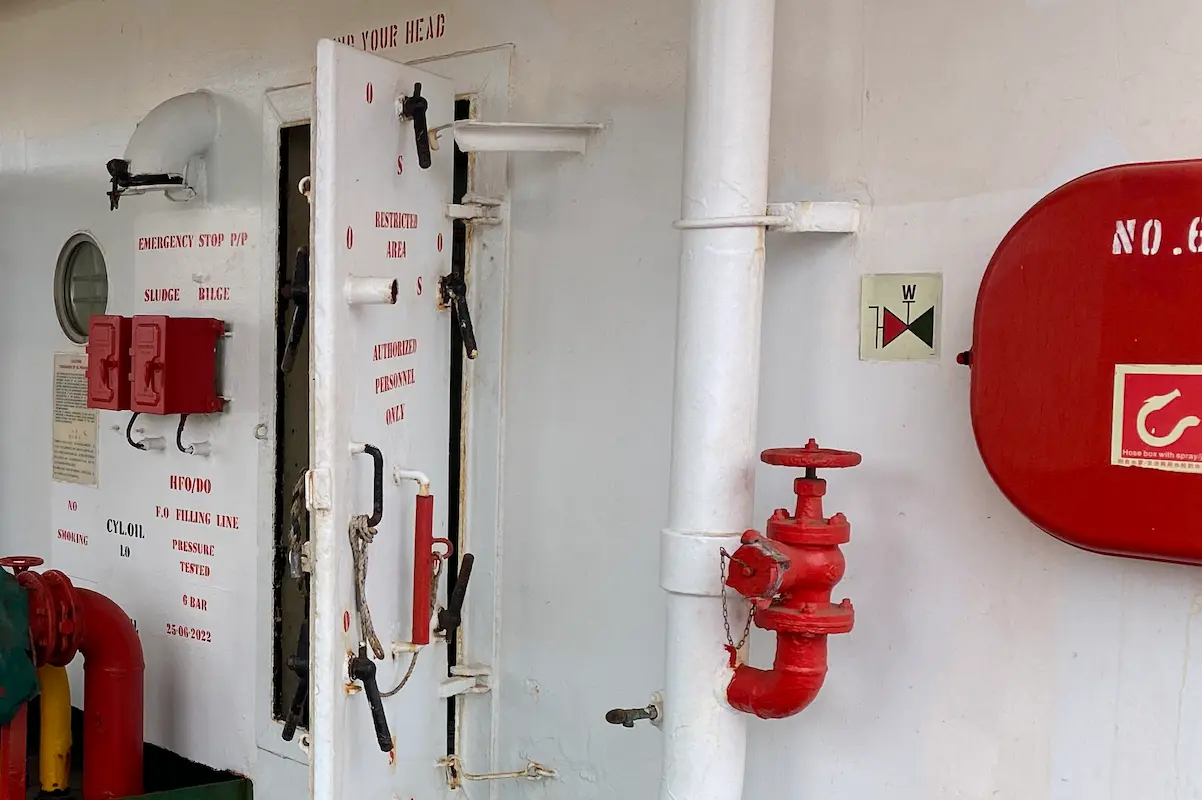Sailboats come in many shapes and sizes, but all have one thing in common: sails. The type of sail used on a boat can make a big difference in how it performs on the water. Understanding the different types of sails and their advantages and disadvantages can help sailors choose the right sail for their boat and the conditions they will be sailing in.
One of the most common types of sails is the mainsail. This sail is attached to the mast and boom and is used to catch the wind and propel the boat forward. Mainsails come in many different shapes and sizes, including full-batten, partial-batten, and no-batten designs. Each design has its own advantages and disadvantages, depending on the type of sailing the boat will be doing.

Another important sail on a sailboat is the headsail. This sail is located at the front of the boat and is used to catch the wind from the side. Headsails come in many different shapes and sizes, including genoas, jibs, and spinnakers. Choosing the right headsail can make a big difference in how the boat performs, especially in heavy wind conditions.
Basic Types of Sails
Sails are an essential part of any sailboat. They are used to harness the wind to propel the boat forward. There are several types of sails available for sailboats, and each serves a different purpose. Here are the three basic types of sails:
Mainsail
The mainsail is the most critical sail on a sailboat. It is a large, triangular sail that is hoisted up the mast. The mainsail is the primary source of propulsion for the boat and is used to control the boat’s direction. The mainsail is attached to the boom, which is a horizontal spar that runs along the bottom of the sail. The boom helps to control the mainsail’s shape and angle to the wind.
The mainsail can be adjusted using a variety of controls, including the mainsheet, the traveler, and the boom vang. These controls allow the sailor to adjust the sail’s shape and angle to the wind, which can help to optimize the boat’s speed and performance.
Jib
The jib is a smaller sail that is located at the front of the boat. It is a triangular sail that is attached to the forestay, which is a wire that runs from the top of the mast to the bow of the boat. The jib is used to balance the boat and to help control its direction. It is often used in conjunction with the mainsail to provide additional power and control.
The jib can be adjusted using a variety of controls, including the jib sheet and the jib halyard. These controls allow the sailor to adjust the sail’s shape and angle to the wind, which can help to optimize the boat’s speed and performance.
Spinnaker
The spinnaker is a large, colorful sail that is used for downwind sailing. It is a symmetrical sail that is attached to the boat’s mast and bow. The spinnaker is used to catch the wind and provide additional power to the boat. It is often used in racing and can help to increase the boat’s speed and performance.
The spinnaker can be adjusted using a variety of controls, including the spinnaker sheet and the spinnaker halyard. These controls allow the sailor to adjust the sail’s shape and angle to the wind, which can help to optimize the boat’s speed and performance.
Specialty Sails
While many sailors may be familiar with the standard mainsail and jib combination, there are a variety of specialty sails that can be used for specific purposes. These sails can be particularly useful for racing, cruising, or for handling difficult weather conditions.
Genoa
The genoa is a type of jib that is larger than the standard jib and overlaps the mainsail. This sail is particularly useful for upwind sailing as it provides more power and lift than a standard jib. The genoa is also useful for light wind conditions where a larger sail area is needed to catch the breeze.
Storm Sail
A storm sail is a heavy-duty sail that is designed for use in strong winds and heavy seas. These sails are typically smaller than the standard mainsail and jib, and are made from heavy-duty materials such as Dacron or Kevlar. The storm sail is used to reduce sail area and provide better control in difficult conditions.
Gennaker
The gennaker is a hybrid between a spinnaker and a genoa. This sail is designed for downwind sailing and is particularly useful in light wind conditions. The gennaker is typically made from a lightweight nylon material and is larger than a spinnaker, but smaller than a genoa. This sail is particularly popular with cruising sailors as it provides a comfortable and stable ride in light wind conditions.
Sail Materials
Sailboats are equipped with sails made from a variety of materials. The type of sail material used depends on the intended use of the sailboat, as well as the budget of the sailor. The following are some of the most common sail materials used on sailboats today:
Dacron
Dacron is a synthetic material that is commonly used in sails. It is durable, easy to handle, and relatively inexpensive. Dacron sails are ideal for cruising and recreational sailing, as they are not designed for racing or high-performance sailing.
Dacron sails are available in a variety of weights, with heavier sails being more durable and lighter sails providing better performance. Dacron sails are also available in a variety of colors, allowing sailors to customize the look of their sailboat.
Kevlar
Kevlar is a high-performance synthetic material that is commonly used in racing sails. Kevlar sails are lightweight, strong, and have a low stretch rate, making them ideal for high-performance sailing. However, Kevlar sails are more expensive than Dacron sails and require more maintenance.
Kevlar sails are available in a variety of weights and colors, allowing sailors to customize the look and performance of their sailboat.
Carbon Fiber
Carbon fiber is a high-performance material that is commonly used in racing sails. Carbon fiber sails are extremely lightweight and have a low stretch rate, making them ideal for high-performance sailing. However, carbon fiber sails are the most expensive option and require the most maintenance.
Carbon fiber sails are available in a variety of weights and colors, allowing sailors to customize the look and performance of their sailboat.
In conclusion, the type of sail material used on a sailboat depends on the intended use of the sailboat and the budget of the sailor. Dacron is the most common sail material used for cruising and recreational sailing, while Kevlar and carbon fiber are used for racing and high-performance sailing.
Sail Shapes
Sail shape is an important factor in determining the performance of a sailboat. Different sail shapes are designed for different wind conditions, and the choice of sail shape can greatly affect a boat’s speed and maneuverability. Here are three common sail shapes:
Bermuda Rig
The Bermuda rig is the most common sail shape on modern sailboats. It consists of a triangular mainsail and a smaller jib or foresail. The triangular shape of the mainsail allows for efficient wind capture, while the jib helps to balance the boat and control the sail’s shape. The Bermuda rig is versatile and can be used in a wide range of wind conditions, making it a popular choice for cruising and racing sailboats.
Gaff Rig
The gaff rig is an older sail shape that was commonly used on sailing vessels in the 19th and early 20th centuries. It features a four-sided mainsail with a gaff spar at the top, which provides additional sail area. The gaff rig is less efficient than the Bermuda rig, but it has a distinctive appearance and can be used in light to moderate wind conditions. Gaff-rigged sailboats are often seen in traditional and classic boat regattas.
Lateen Rig
The lateen rig is a triangular sail shape that is commonly used on small boats and traditional sailing vessels in the Mediterranean and Middle East. It consists of a single, triangular sail that is mounted on a long, diagonal spar called a yard. The lateen rig is efficient in light to moderate winds and is particularly well-suited to sailing downwind. It is often used on small sailing dinghies and traditional wooden boats.
- 7 Boat Salvage Yards in Michigan – January 15, 2025
- Fire Hose SOLAS Requirements, Regulation 10: Ensuring Maritime Safety – January 9, 2025
- Main Spaces on Cargo Ships: Functions and Characteristics – January 6, 2025



